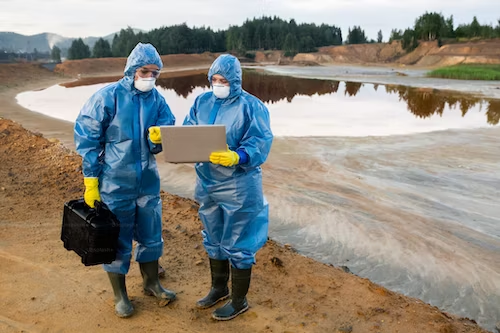The advent of 5G technology has ushered in a new era of connectivity, promising faster internet…
Science Behind 5G Dangers: Current Research and Mitigation Effort

The deployment of 5G technology has been met with widespread excitement for its potential to revolutionize communication and connectivity. However, concerns about Science Behind 5G Dangers the potential health risks associated with 5G have sparked rigorous scientific investigation. In this article, we will delve into the current state of scientific research regarding the dangers of 5G and explore the measures scientists are taking to address and mitigate these concerns.
Understanding 5G Technology
Before delving into the potential dangers, it is crucial to understand what 5G technology entails. The term “5G” refers to the fifth generation of wireless technology, promising faster internet speeds, lower latency, and increased connectivity. Unlike its predecessors, 5G utilizes higher frequency bands, including millimeter waves, to transmit data at unprecedented rates. While these advancements hold great promise, they have also given rise to concerns about their impact on human health.
Scientific Research on 5G Dangers
Numerous studies have been conducted to examine the potential health effects of exposure to 5G radiation. One primary concern revolves around the increased frequency and intensity of electromagnetic fields (EMFs) emitted by 5G infrastructure. EMFs are a form of non-ionizing radiation, and while they do not possess enough energy to ionize atoms or molecules, some worry that prolonged exposure may still pose health risks.
One area of focus in scientific research involves the thermal effects of 5G radiation on human tissue. Some studies suggest that exposure to millimeter waves can lead to a slight increase in tissue temperature. However, the consensus among researchers is that these temperature increases are well below the safety thresholds established by regulatory bodies, such as the International Commission on Non-Ionizing Radiation Protection (ICNIRP).
In addition to thermal effects, scientists are investigating the non-thermal effects of 5G radiation. This includes potential impacts on cellular and molecular processes within the human body. Preliminary studies have explored various aspects, including DNA damage, oxidative stress, and changes in gene expression. However, it is essential to note that the majority of these studies are in the early stages, and more comprehensive research is needed to draw definitive conclusions.
Mitigation Measures and Safety Guidelines
To address concerns raised by both the scientific community and the public, researchers and regulatory bodies are actively working to establish safety guidelines and implement mitigation measures. The ICNIRP, for example, regularly reviews and updates its guidelines to ensure they reflect the latest scientific understanding of non-ionizing radiation.
One approach to mitigating potential risks involves implementing stricter exposure limits for 5G infrastructure. These limits are designed to prevent adverse health effects while still allowing for the deployment of advanced wireless technology. Governments and regulatory bodies worldwide are actively involved in setting and enforcing these limits to protect public health.
Moreover, ongoing research is exploring innovative technologies and materials that could minimize exposure to 5G radiation. For instance, scientists are investigating the development of novel shielding materials that can absorb or deflect electromagnetic waves, reducing the intensity of exposure in specific areas.
Community Engagement and Communication
Recognizing the importance of addressing public concerns, scientists and industry stakeholders are actively engaged in transparent communication about 5G technology. This includes providing accurate information about the science behind 5G, the safety measures in place, and the ongoing research efforts to understand any potential risks fully.
Public awareness campaigns are being launched to disseminate information and dispel misconceptions. By fostering an open dialogue, scientists aim to build trust and ensure that the public is well-informed about the safety measures and ongoing research related to 5G technology.
Exploring the Science Behind 5G Dangers: Current Research and Mitigation Efforts
While concerns about the potential dangers of 5G technology persist, the scientific community is actively engaged in research to understand the risks and implement effective mitigation measures. Ongoing studies are examining the thermal and non-thermal effects of 5G radiation, and regulatory bodies are establishing and enforcing safety guidelines to protect public health. Through transparent communication and community engagement, scientists are working to address concerns and ensure that the deployment of 5G technology is both revolutionary and safe for everyone.



